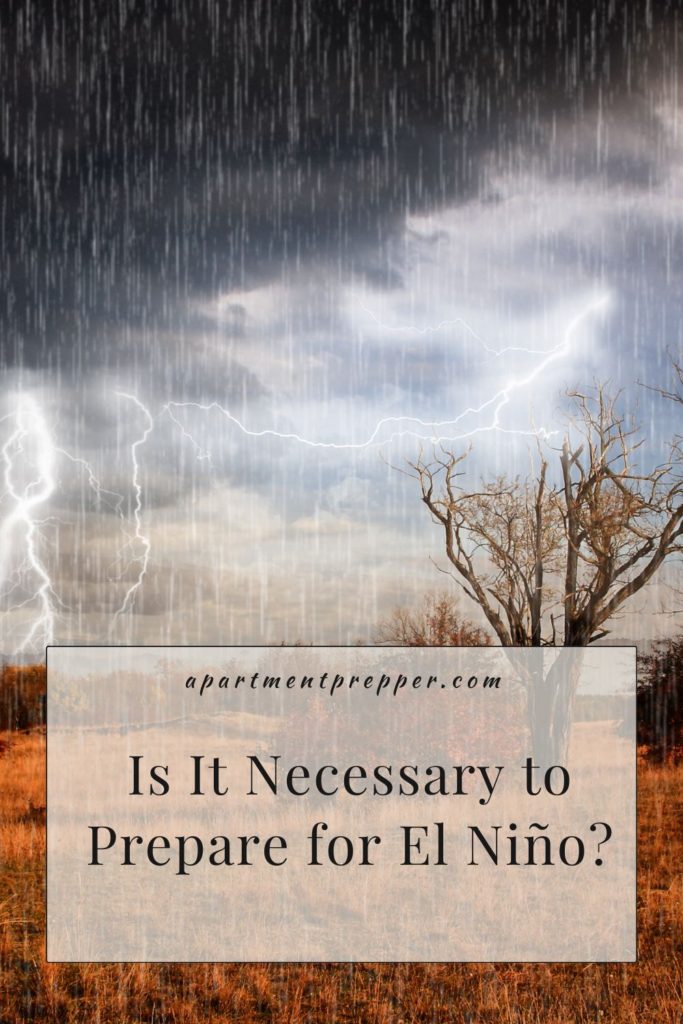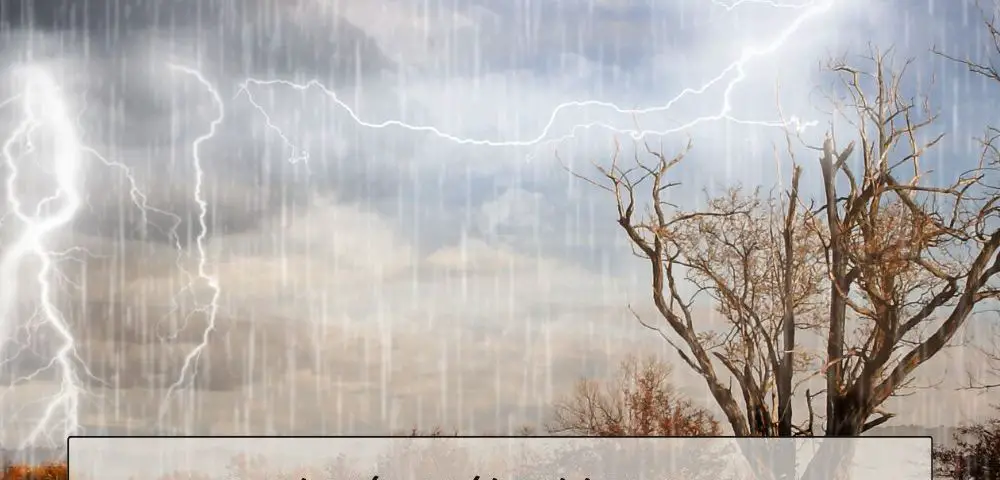Written by Bernie Carr
I’ve seen a few prepper sites sounding the alarm about El Nino. I hadn’t really given it much thought, until recently, so I thought I’d look into it.
What is El Nino?
El Niño is a climate pattern characterized by the warming of sea surface temperatures in the central and eastern equatorial Pacific Ocean. It can have significant impacts on weather patterns worldwide, including changes in rainfall, temperature, and storm activity.
During a typical El Niño event, the trade winds that usually blow from east to west across the Pacific weaken or even reverse direction. This weakening allows warm surface waters from the western Pacific to move eastward, leading to a buildup of warm water along the coasts of South America.
The impacts of El Niño can vary depending on its strength and duration, but some of the common effects include:
- Changes in rainfall patterns: El Niño can disrupt normal rainfall patterns, leading to droughts in some regions and increased rainfall in others. For example, parts of South America may experience drought conditions, while parts of the United States may receive above-average rainfall. For example, according to NOAA, El Nino tends to suppress hurricane activity in the Atlantic, resulting in fewer hurricanes. However, it may also cause stronger storms.
- Disruption of marine ecosystems: The warming of the Pacific Ocean can have significant effects on marine life. It can lead to changes in fish populations, shifts in migration patterns, and even coral bleaching in some areas.
- Impact on global weather: El Niño can influence the jet stream and atmospheric circulation patterns, affecting weather systems around the world. It has been associated with changes in precipitation, temperature, and storm tracks in various regions, including increased rainfall in the southern United States and reduced rainfall in Southeast Asia and Australia.
It is important to note that El Niño is part of a larger climate phenomenon known as the El Niño-Southern Oscillation (ENSO) cycle, which also includes its opposite phase, La Niña. La Niña is characterized by cooler-than-average sea surface temperatures in the eastern equatorial Pacific and has different impacts on weather patterns compared to El Niño.
El Niño events typically last for several months to a year or more, but their exact duration can vary. The frequency and intensity of El Niño events can also vary, with some years experiencing stronger or more prolonged events than others.
Why would you need to be concerned about El Nino?
People who are interested in preparing for emergencies may have concerns about El Niño due to its potential impact on weather patterns and the associated consequences.
Extreme weather
El Niño can lead to the occurrence of extreme weather events such as storms, heavy rainfall, and flooding in certain regions. These events can cause significant damage to infrastructure, disrupt transportation systems, and pose risks to personal safety. Preppers may be concerned about the potential for these events and take precautions to mitigate their impact.
Drought
While El Niño is often associated with increased rainfall in some areas, it can also result in drought conditions in other regions. Preppers who rely on a stable water supply may be concerned about the potential for water scarcity during El Niño events and may take steps to store or conserve water resources.
Possible food supply shortages
Agricultural impacts: El Niño can disrupt normal rainfall patterns and temperature regimes, affecting agricultural productivity. Droughts or excessive rainfall can harm crops, leading to reduced yields and potential food shortages. Preppers who prioritize self-sufficiency and food security may be concerned about the impact of El Niño on food production and take measures to store food or develop alternative food sources.
Financial impact
The disruptions caused by El Niño can have broader economic and societal implications. Infrastructure damage, crop losses, and changes in trade patterns can lead to increased prices for certain goods and services.
How do you prepare for El Nino?
Here are some preparedness measures you can take:
- Stay informed. Stay updated on El Niño forecasts and related weather patterns through reliable sources such as meteorological agencies. This will help you understand the potential impacts and plan accordingly.
- Consider your flood risk. If you live in an area prone to flooding, take preventive measures such as installing flood barriers or sandbags to protect your property. Ensure that your gutters and drainage systems are clear and functioning properly.
- Stock up on water if you live in a drought-prone area. El Niño can bring heavy rainfall in some regions while causing droughts in others. Prepare for excess rainfall by ensuring proper drainage around your home and checking for any leaks in roofs or pipes. Conversely, if you expect drought conditions, conserve water by implementing water-saving practices and maintaining efficient irrigation systems.
- Secure your outdoor belongings. Strong winds and storms can accompany El Niño. Secure or store outdoor furniture, equipment, and any loose items that could become projectiles during high winds.
- Check your property insurance coverage Review your insurance policies, particularly those related to homeowners or property insurance. Ensure that your coverage adequately protects against potential damages caused by floods or severe weather events.
- Boost your emergency supplies. Maintain a well-stocked emergency kit that includes essential items such as food, water, medications, flashlights, batteries, and a portable radio. Be prepared for potential power outages and disrupted services.
- Review your communication plan. Establish a communication plan with your family and loved ones to ensure everyone knows how to stay in touch during emergencies. Designate a meeting point and have a designated contact person outside the affected area who can coordinate information.
In conclusion
To answer the original question, is it necessary to prepare for El Nino?, it really depends on your location. If you’re lucky you may not even be affected. Specific preparations will depend on your location and the potential risks associated with El Niño in YOUR region. It’s important to adapt these general guidelines to your individual circumstances and consult local authorities for specific recommendations. It’s good to be aware of potential changes due to El Nino, but it is not necessary to panic about it. I’d recommend continuing to be prepared for emergencies that are common in your area, which will also cover you in case El Nino exacerbates weather related threats.
Today’s societal climate not supportive of prepping. With your help, we can keep bringing you content that is often suppressed. Help keep Apartment Prepper alive.
Join me on Patreon for ad-free content.
Or Help out via Paypal
About the author
Bernie Carr is the founder of Apartment Prepper. She has written several books including the best-selling Prepper’s Pocket Guide, Jake and Miller’s Big Adventure, The Penny-Pinching Prepper and How to Prepare for Most Emergencies on a $50 a Month Budget. Bernie’s latest e-book, FRUGAL DIY has just been released on Amazon. Her work appears in sites such as the Allstate Blog and Clark.com, as well as print magazines such as Backwoods Survival Guide and Prepper Survival Guide. She has been featured in national publications such as Fox Business and Popular Mechanics. Learn more about Bernie here.
FB: https://www.facebook.com/apartmentprepper
Instagram: https://www.instagram.com/apartmentpreppers/
Twitter: https://twitter.com/AptPrepper
YouTube: https://www.youtube.com/@apartmentpreppers/featured
Pinterest: https://www.pinterest.com/aptprepper/




